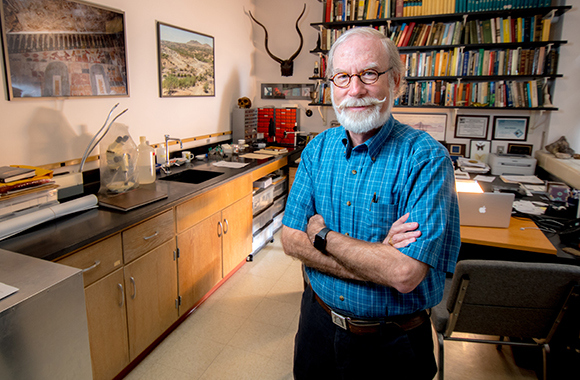You have to hand it to cicadas; they are usually right on time.

MOUNT ST. JOSEPH UNIVERSITY
FOR IMMEDIATE RELEASE
Contact:
Gene Kritsky, Ph.D., M.S.
513-244-4401
gene.kritsky@msj.edu
CINCINNATI - After their 17-year hiatus, billions of the Brood X bugs will emerge in early May from underground lairs in a natural cycle that cicadas have followed for thousands of years.
"This is the big one, a generational event," said Gene Kritsky, Ph.D., Dean of Behavioral and Natural Sciences at Mount St. Joseph University in Cincinnati, who has studied, tracked and written about cicadas throughout his academic career.
"For people who have been around awhile, they will remember what it was like 17 years ago or even farther back to when they were kids and they'll know what to expect," Dr. Kritsky said. "For those who weren't alive 17 years ago or who were too young at the time and can't remember, they are in for quite an experience."
Baltimore is among the regions welcoming cicadas this spring. From the Midwest to the eastern seaboard, the Brood X emergence will cover up the major metropolitan areas of New York, Washington, Philadelphia, Indianapolis, Louisville, Lexington, Nashville, Columbus, Dayton and others, as well as 15 states - Delaware, Georgia, Illinois, Indiana, Kentucky, Maryland, Michigan, New Jersey, New York, North Carolina, Ohio, Pennsylvania, Tennessee, Virginia and West Virginia.
To truly enjoy the cicada experience Dr. Kritsky and the Mount have developed a way for anyone to help scientists track and map Brood X.
Dr. Kritsky worked in partnership with the Center for IT Engagement (cITe) at Mount St. Joseph University to create the Cicada Safari app. It allows users to search, photograph, video and help map the cicadas, which will contribute to vital scientific research by determining the distribution of the brood of the emerging cicadas. Such information will enable scientists to assess the status of Brood X cicadas.
“As strange as it may sound, but periodical cicada broods can go extinct,” Kritsky said. “Brood XI, which emerged in large numbers just two centuries ago, was deemed extinct in 1954.”
"We developed this app because so many people are fascinated by cicadas," he said. "This is true citizen science. People can use their phones with our app to track, photograph and help us map the cicadas to verify where they are emerging. An issue with citizen science projects is the difficulty to verify new observations. The photographs submitted to our map are like voucher specimens permitting us to verify the observations making the maps more useful for future research."
To join Cicada Safari and help map the 2021 emergence, download the free app from the Apple app store or Google play. When a cicada is spotted, users can use the app to photograph or video the insects and then submit the images for inclusion on MSJ's 2020 cicada map.
Dr. Kritsky and the Mount have also launched the CicadaSafari.org website, which offers a virtual trove of cicada facts, history, facts, maps, activities and more.
A recognized cicada expert, Dr. Kritsky has given hundreds of media interviews, published academic papers on cicadas and is the author of two books on cicadas. His new book, "Periodical Cicadas: The Brood X Edition” is published by the Ohio Biological Survey.
Following are some cicada facts from the Cicada Safari.org website:
- Cicadas emerge after the soil temperature exceeds 64 degrees, which is usually in mid-May.
- Only male cicadas sing through sound-producing structures called tymbals on either side of the abdomen under the wings.
- Cicadas do not eat solid food but do drink fluids to avoid dehydration.
- Cicadas do not sting or bite, and do not carry diseases.
- Periodical cicada years are quite beneficial to the ecology of the region. Their egg-laying in trees is a natural pruning that results in increased numbers of flowers and fruits in the succeeding years. Their emergence from the ground turns over large amounts of soil, and after they die their decaying bodies contribute a massive amount of nutrients to the soil.
- Periodical cicadas are often incorrectly called locusts. Locusts are grasshoppers and cicadas are more closely related to aphids than grasshoppers.
About Mount St. Joseph University
As a Catholic Institution rooted in the values of the Sisters of Charity, Mount St. Joseph University excels at serving the common good. Undergraduate, graduate, and doctoral students at the Mount are inspired to think beyond the classroom and redraw the bounds of what's possible for their futures. This is accomplished through individualized educational experiences, a safe, secure campus environment, and an all-in commitment from faculty and staff to seeing students reach their highest potential. The Mount fosters life-long learners who serve, care, and contribute to the world beyond their front doors.
###

